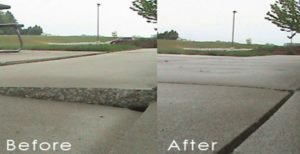Truss bridges are a popular type of bridge structure known for their efficient use of materials and load-bearing capabilities. In the following list, we will explore 40 pros and cons of truss bridges, covering their advantages in terms of strength, cost-effectiveness, and ease of construction, as well as the potential drawbacks and considerations associated with their use.
Pros:
- Strength and Load-Bearing Capacity: Truss bridges are known for their high strength-to-weight ratio, allowing them to bear heavy loads over long spans.
- Cost-Effectiveness: Truss bridges often require fewer materials compared to other bridge types, making them cost-effective for construction projects.
- Versatility: Truss bridges can be designed and adapted to various spans and conditions, providing versatility in bridge construction.
- Ease of Construction: Truss bridges are relatively easy to construct, with prefabricated truss components that can be assembled on-site.
- Structural Stability: Truss bridges offer excellent structural stability, providing reliable support and durability.
- Minimal Maintenance: Truss bridges typically require minimal maintenance due to their sturdy design and materials.
- Aesthetically Pleasing: Truss bridges often have a visually appealing design, adding architectural value to the surrounding environment.
- Quick Construction: The simplicity of truss bridge construction allows for faster project completion compared to other bridge types.
- High Resistance to Earthquakes: Truss bridges can be designed to withstand seismic forces, making them suitable for earthquake-prone areas.
- Durability: Truss bridges can have a long lifespan when properly maintained, ensuring long-term functionality.
- Flexibility in Material Choice: Truss bridges can be constructed using a variety of materials, such as steel, concrete, or timber, allowing for flexibility in design and cost.
- Easy Inspection: Truss bridges have accessible components, facilitating visual inspection and maintenance checks.
- Sustainability: Truss bridges can be designed with sustainable materials and construction practices, reducing their environmental impact.
- Rapid Replacement: If necessary, truss bridges can be quickly replaced or repaired, minimizing disruptions to traffic flow.
- Scalability: Truss bridges can be scaled up or down in size to accommodate different spans and traffic volumes.
- Proven Track Record: Truss bridges have been used for centuries, demonstrating their reliability and effectiveness.
- Adaptability to Environmental Conditions: Truss bridges can be designed to withstand various environmental conditions, such as strong winds or extreme temperatures.
- Ease of Inspection: The open structure of truss bridges allows for easier visual inspection of components, facilitating maintenance and repairs.
- Simplicity of Design: Truss bridges have a straightforward design concept, making them easier to understand and analyze structurally.
- Architectural Freedom: Truss bridges offer architectural freedom, allowing for the creation of unique and aesthetically pleasing bridge designs.
Cons:
- Limited Span Length: Truss bridges have a maximum span length limitation compared to other bridge types.
- Spatial Requirements: Truss bridges require more horizontal space compared to other bridge types due to their structural configuration.
- Maintenance Challenges: Certain truss bridge designs may pose challenges in terms of maintenance, requiring specialized access equipment or techniques.
- Aesthetic Limitations: The visual appearance of truss bridges may not suit every location or architectural preference.
- Limited Design Flexibility: Truss bridges may have design limitations in terms of curvature or complex architectural features.
- Restricted Clearance: Some truss bridge designs may have limited clearance, impacting navigation or transportation under the bridge.
- Material Limitations: Truss bridges may have material limitations based on their span length and load-bearing requirements.
- Complex Load Distribution: The load distribution in truss bridges can be complex, requiring careful engineering and analysis.
- Construction Time: While truss bridges are relatively quick to construct, more complex designs may require longer construction times.
- Noise and Vibrations: Truss bridges may generate noise and vibrations from passing vehicles, impacting nearby residents or structures.
- Environmental Impact: The construction and maintenance of truss bridges can have environmental implications, such as habitat disruption or resource consumption.
- Retrofitting Challenges: Modifying or retrofitting existing truss bridges can be challenging due to their structural complexity.
- Weight Restrictions: Truss bridges may have weight restrictions that limit the types of vehicles or loads that can pass over them.
- Limited Adaptability: Once a truss bridge is built, it may be less adaptable to changing traffic demands or design requirements.
- Visual Obstruction: The structural components of truss bridges may obstruct views or sightlines in certain locations.
- Non-Uniform Loading: The load distribution in truss bridges may not be uniform, requiring careful consideration of load placement.
- Limited Corrosion Resistance: Depending on the material used, truss bridges may require corrosion protection measures, especially in corrosive environments.
- Height Restrictions: Some truss bridge designs may have height restrictions, affecting clearance for tall vehicles or ships.
- High Initial Cost for Special Designs: More complex truss bridge designs or specialized materials may result in higher initial construction costs.
- Maintenance Accessibility: Certain areas of truss bridges may be challenging to access for routine maintenance or repairs.
Pros
- Strength and Load-Bearing Capacity
- Cost-Effectiveness
- Versatility
- Ease of Construction
- Structural Stability
- Minimal Maintenance
- Aesthetically Pleasing
- Quick Construction
- High Resistance to Earthquakes
- Durability
- Flexibility in Material Choice
- Easy Inspection
- Sustainability
- Rapid Replacement
- Scalability
- Proven Track Record
- Adaptability to Environmental Conditions
- Ease of Inspection
- Simplicity of Design
- Architectural Freedom
Cons
- Limited Span Length
- Spatial Requirements
- Maintenance Challenges
- Aesthetic Limitations
- Limited Design Flexibility
- Restricted Clearance
- Material Limitations
- Complex Load Distribution
- Construction Time
- Noise and Vibrations
- Environmental Impact
- Retrofitting Challenges
- Weight Restrictions
- Limited Adaptability
- Visual Obstruction
- Non-Uniform Loading
- Limited Corrosion Resistance
- Height Restrictions
- High Initial Cost for Special Designs
- Maintenance Accessibility



